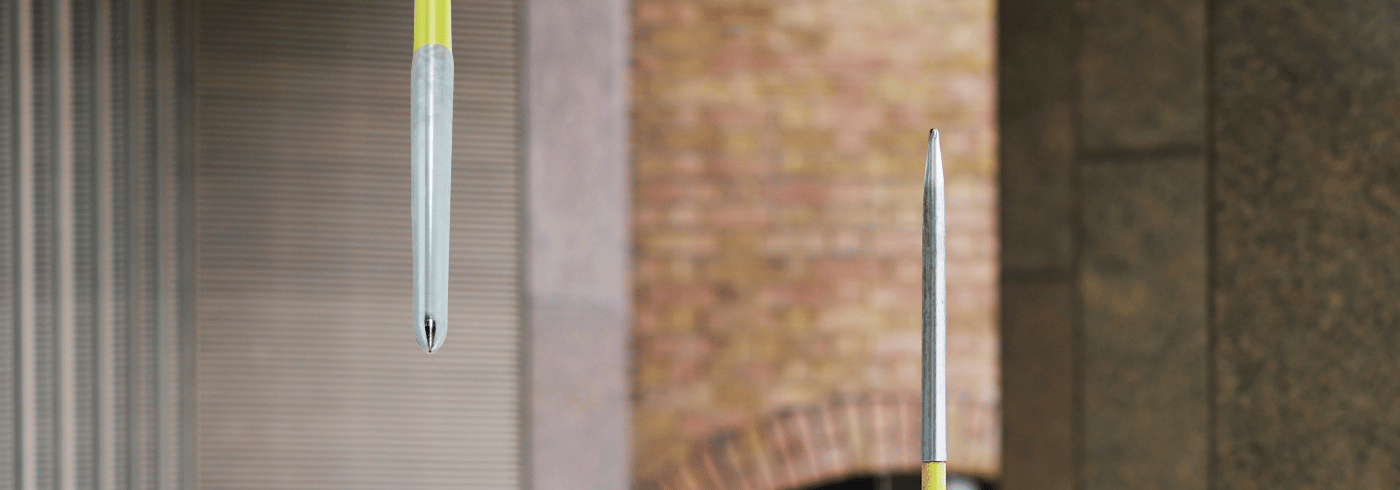
Headwind vs Tailwind: Which Javelin is Best?
BY BEKAH WALTON
The variety of javelins on offer can be overwhelming and knowing where to start when making a purchase can be difficult. As athletes, we tend to buy the most popular model without really researching which option is the best for us.
In this latest blog, we will outline some of the differences between the javelins available to help you make the best choice for your throwing!
WHAT JAVELIN SHOULD YOU BUY?

Advice is available to guide your choice. Neuff work with one of the lead UK javelin coaches, David Turner (head throws coach at Loughborough University), who is happy to offer advice on your choice of javelin. And what's more, this advice is entirely free!
You can visit Neuff's Throws Guidance page for more information.
THE TWO TYPES OF JAVELIN

The name gives away the difference between these two categories of javelins. Firstly, let's take a look at tailwind javelins.
TAILWIND JAVELINS

A tailwind javelin is preferable for throwing when the wind blows in the direction of the throw. These javelins have a blunter tip design and, surprisingly to most, will theoretically always go further than headwind javelins despite their blunter point.
HEADWIND JAVELINS

Headwind javelins have a more slender point than the tailwind and can self-correct mis-hit flights. As a result, tailwind javelins can be a better choice for more powerful yet less technical throwers. On the other hand, the headwind javelin can be more appropriate for technically skilled throwers. Generally, this means the tailwind may be a better choice for beginners. However, it is crucial in this instance to emphasise the word can.
GETTING THE "FEEL" OF A JAVELIN

Athletes are not robots, and the decision usually comes down to personal preference and the 'feel' for a javelin. 'Feeling' can only be defined as the javelin that feels right in the hand and is most comfortable in carry and delivery positions. Interestingly, misconceptions around design mean that in the first introduction to the tailwind javelin, they were less popular. This is because athletes believed they would not outperform the headwind. However, personal preference will influence your overall decision in the javelin you choose.
JAVELIN FLEX NUMBERS

Flex rate is the measure of how much the javelin bends during flight. Javelins with a higher flex are softer and more forgiving on the elbow when throwing. They are also more correcting when a flight is mis-hit. However, this means the javelin loses a lot of energy when it vibrates through flight, so it won't travel as far.
A stiffer javelin does the opposite: it has the potential to travel further, but it can come at a cost if the javelin is not delivered through the point – on both the distance and the athlete. Carbon javelins are stiffer, so they are not recommended for athletes unless they are at the elite level.
DOES MATERIAL MATTER?
Materials are a really important choice and greatly influence the flex rate. There are several options for athletes, with steel, composite, carbon, and aluminium being some of the most popular choices. The material influences the flex rate of the javelin, which we already know influences the length of flight and the injury risk for the athlete.
TOP JAVELIN BRANDS

There are four major javelin brands that throwers should be looking into at the moment. These are:
It isn't easy to distinguish which brand is best, but elite women currently tend to prefer the Nemeth brand, whereas men tend to choose Nordic. Neuff has a great selection of javelin brands from club level to elite and has divided them into subsections to help you browse even easier.
ELITE VS PERFORMANCE-LEVEL JAVELINS

The main difference between the elite and performance-level javelins is the flex rate and balance.
The balance is the position of the centre of mass along the javelin and influences the implement's distance rating, a recommendation for the maximum distance a javelin can be thrown. A beginner's javelin usually has a rating of 50m for a female thrower and 70m for men, with the athlete throwing approximately 10-20m below the rating. If an athlete throws a distance too far below or above the rating, the flight will likely be incorrect and land flat or top-heavy.
It is also common for elite athletes to have several javelins to cover all the different conditions they may face when competing. This can include different brands, winds, materials, and flex rates. Science and engineering are ultimately the foundations for the correct javelin choice. Still, the decision usually comes down to personal preference and the 'feel' for a javelin!
MY PERSONAL CHOICES

My favourite javelin is the Nemeth Classic 75m, and I usually prefer Nemeth over other brands. However, I also have a Nordic Diana. For whatever reason, it just feels right on some days when the Nemeth does not! My first javelin, however, was a Nemeth Universal. I don't compete with it anymore because the balance and flex rate is no longer correct for me. However, I would still recommend this as an excellent choice for training.
I hope this blog has helped you to understand the key differences between tailwind and headwind javelins. Don't forget to contact David Turner through Neuff's website if you would like further guidance on choosing the correct javelin for your throwing needs!
ABOUT BEKAH WALTON

Originally a netballer, Bekah quickly discovered a talent for javelin throwing, and hasn't looked back since.
Bekah is a British Champion and now has her eyes set on Commonwealth and Olympic glory!
Instagram: @bekahhwaltonn
Twitter: @bekah_walton


Leave a comment